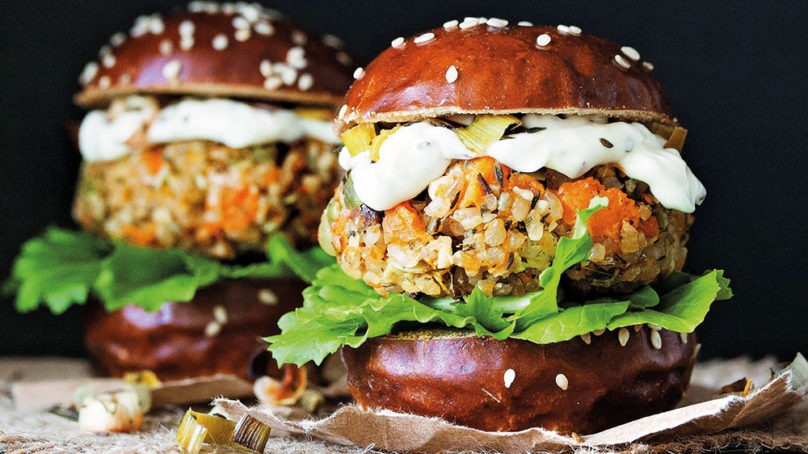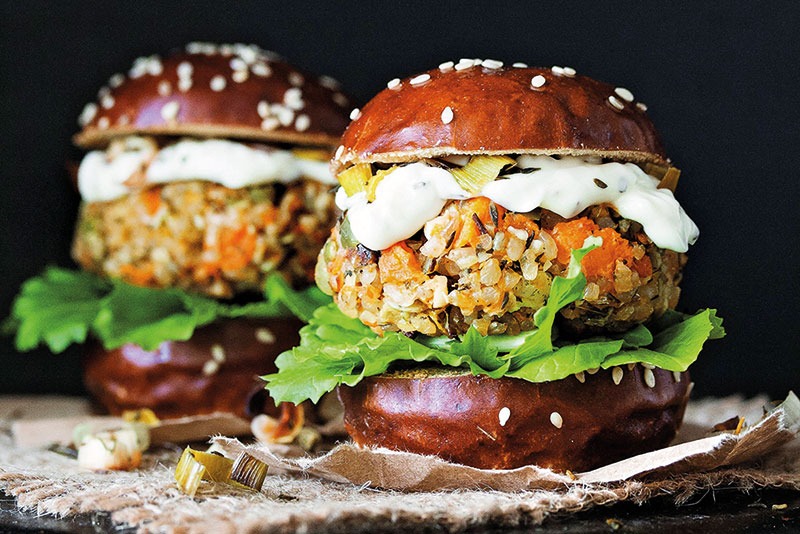Sharpen your knives and forks and let’s dig into the trends dominating the restaurant industry. Toufic Akl, partner at Hodema, tells us what to taste and what to devour!
Last time we looked, there was a global battle underway, targeting gluten, refined sugar and dairy. This trend remains ongoing, supported by two new, key phrases, which are ‘clean eating’ and ‘environmental sustainability’. However, predictably, some ideas have also failed to pass the test of time, such as the trend for activated charcoal, which was used to infuse our croissants and lattes, blue cocktails and wine.
Clean eating
The healthy eating drive has inevitably prompted an entire range of variations across the food landscape on the theme of what’s good for us. ‘Clean eating’ is the most highly anticipated trend for next year, bolstered by renowned chefs, such as the UK’s Jamie Oliver, who are championing the concept, which involves adhering to a combination of criteria when preparing a dish. As expected, fried and processed ingredients are a no-go, while fruits, vegetables, non-refined sugar and plant milk are among the ingredients given a green light. Dishes are then prepared using healthy cooking techniques. With several clean-eating projects in the making in Beirut, momentum is expected to build in this segment.
Free from
The ‘free from’ trend has found its place in the sun, thanks, in particular, to the rise of gluten-free mania. Its popularity will continue to grow on the back of ever-increasing awareness about allergies and intolerances. A move among some consumers to drastically reduce gluten intake, rather than omit it altogether, is driving up sales of slow dough breads, such as the ‘pinsa’ pizza, which is easier to digest than regular pizza varieties, thanks to its longer fermentation process. Dairy also remains under scrutiny, with a growing number of studies revealing the benefits of going dairy-free and indicating that adults don’t need lactose. Moreover, research suggests that about 75 percent of the world’s population is genetically unable to fully digest milk. Going dairy-free is also thought to help prevent digestive disorders and encourage clearer skin. The final villain is refined sugar, which has now been linked to heart disease, obesity and bladder cancer, when consumed on a daily basis. Many have blamed the sugar industry for downplaying these risks over the years.
Organic
We’re gradually saying farewell to pesticides, synthetic fertilizers, antibiotics and growth hormones. While organic ingredients have been around for some time, their prohibitive cost was often a deterrent for many mainstream consumers. Fortunately, a global, booming market is finally making produce more affordable, although the region’s restaurants still face a number of challenges, including inadequate supply and problems obtaining certifications they know to be trustworthy, via the authorities.
Plant based
For lovers of all things green who want to take the concept further, plant-based foods are causing a buzz. The veganism trend is now in full swing and booming globally, even finding a niche in major fast-food chains, such as McDonald’s and A&W, which are now offering a vegan burger. Pizza Hut has followed suit in the UK, alongside ice-cream giants Ben & Jerry’s and Häagen-Dazs, which have added new, dairy-free and plant-based frozen dessert options to their menus. Alternatives to milk are also taking the world by storm, with almond milk now edging the longtime leader soya milk from the number one spot. Given these trends, customers can expect to be able to request yogurt, latte and even cheese to be made with alternatives to dairy, such as almond and perhaps even coconut milk. Plant-based foods also have the added bonus of leaving a much smaller environmental footprint, which is currently a hot global topic. And for those who still think that vegan eating is boring, look out for some of the creative dishes currently making waves, which range from zucchini noodles, mashed cauliflower and squash blossom risotto to zucchini crust pizza. Buon appetito!
Mediterranean ingredients
If you’re not big on tofu but still keen to be kind to your body, there are plenty of broader alternatives to the vegan options. Mediterranean cuisine is undoubtedly a current buzz-phrase, chalking up a loyal fan base of over a billion people globally. Proven to be one of the world’s healthiest diets, this way of eating is leading to shelves well beyond the region brimming with pomegranates, zaatar, sumac and turmeric.
More bowls
Another more recent trend showing signs of catching on is food bowls. Beginning with the Hawaiian Poke Bowl, the concept has now extended its reach to the point where bowls of all varieties are available all day long, with diners able to select the ones that suit their taste and mood. While bowls usually consist of vegetables, rice and seasoning, some feature chicken, beef, shrimps and even fruits, seeds and yogurt.
The artisan way
Artisan cuisine is a phrase on every chef’s lips right now. For those still unsure what it entails, this concept makes the care, expertise and quality of the ingredients a key priority, similar to the approach adopted by an artisan working with a wooden cabinet or a piece of jewelry. The trend stems from a growing demand among consumers to know more about the origins of their food and their desire to consume fresh, local ingredients. While the ‘farm to table’ idea, where restaurants obtain their fruits and vegetables directly from the producer, is already a familiar concept to many, the ‘butcher to table’ concept, which is just one interpretation, takes the trend to another level. Advertised as fresh and homemade, the range of artisan food and drink is expansive, from juices and beer to bread, made using natural ingredients and prepared in a traditional way.
Paleo, possibly?
Drawing on a trend that has been around for a while, ‘paleo’ dishes are made from what is presumed to be the foods eaten by early humans, such as meat, fish, vegetables, fruits, nuts and seeds. Dairy and cereal products are excluded, as, of course, is processed food. The concept has been given a lukewarm reception by some, with its intermittent popularity questioned by several observers, who point out that many ancient fruits and vegetables have long disappeared. Nevertheless, this trend could prove to be a popular passing fancy with the more adventurous among us.
When eating is a state of mind
It’s worth mentioning that researching restaurant fads this year has forced us to look beyond our plates, and, once again, it’s all about health and environmental sustainability.
Food waste is a big concern and one that is rising rapidly, indicating a growing awareness about food values. Higher numbers of requests for doggy bags to take home leftovers show that people want to act in a more responsible way when eating out.
Responsible sourcing is also high in the trending charts. Knowing where the ingredients on your plate come from makes a big difference nowadays, with the established link between the carrot being eaten, its producer, the community and the local economy seen as a pivotal part of the eating-out experience. People are also giving greater thought to supporting the protection of both plants and animals, and the welfare of farmed and wild species, while displaying a wish to champion social benefits. In addition, they are showing themselves keen to avoid contributing to climate change and damaging or wasting natural resources.
Instagrammable
This is not a trend anymore; it’s here for good and restaurants have got it. Instagram has contributed to a food revolution, with the mobile app shining a spotlight on an additional aspect of food – its styling and design. Colors and set-up are now as important at times as the taste of a dish. The Instagram element has become such an integral part of our lives that some cooking schools are including photo classes in their curriculum.
And what’s in our crystal ball?
Now that we’ve got 2019 covered, there’s a few slightly more unusual trends that could still find their way onto our radar in time. While processed food, saturated fat and sugar tend to dominate today’s snacks, future varieties will include alternative options, such as fortified ice creams, vegetable desserts, mood-enhancing ingredients and protein-packed chips.
Brain food is also likely to make its entrance in restaurant dishes next year. Traditional sources of power, such as eggs, spinach and berries, will be in greater evidence, as well as less common options, such as turmeric, sage, lion’s mane mushrooms and holy basil.
And finally, ready or not, cannabis is becoming legal in an increasing number of countries, which has given a number of chefs, ideas and inspiration. Space cake, pot chips, happy pizza and love cookies are already appearing on menus in the US. LA-based renowned chef Andrea Drummer has even published a book titled ‘Cannabis Cuisine: Bud Pairings of A Born Again Chef’.
















